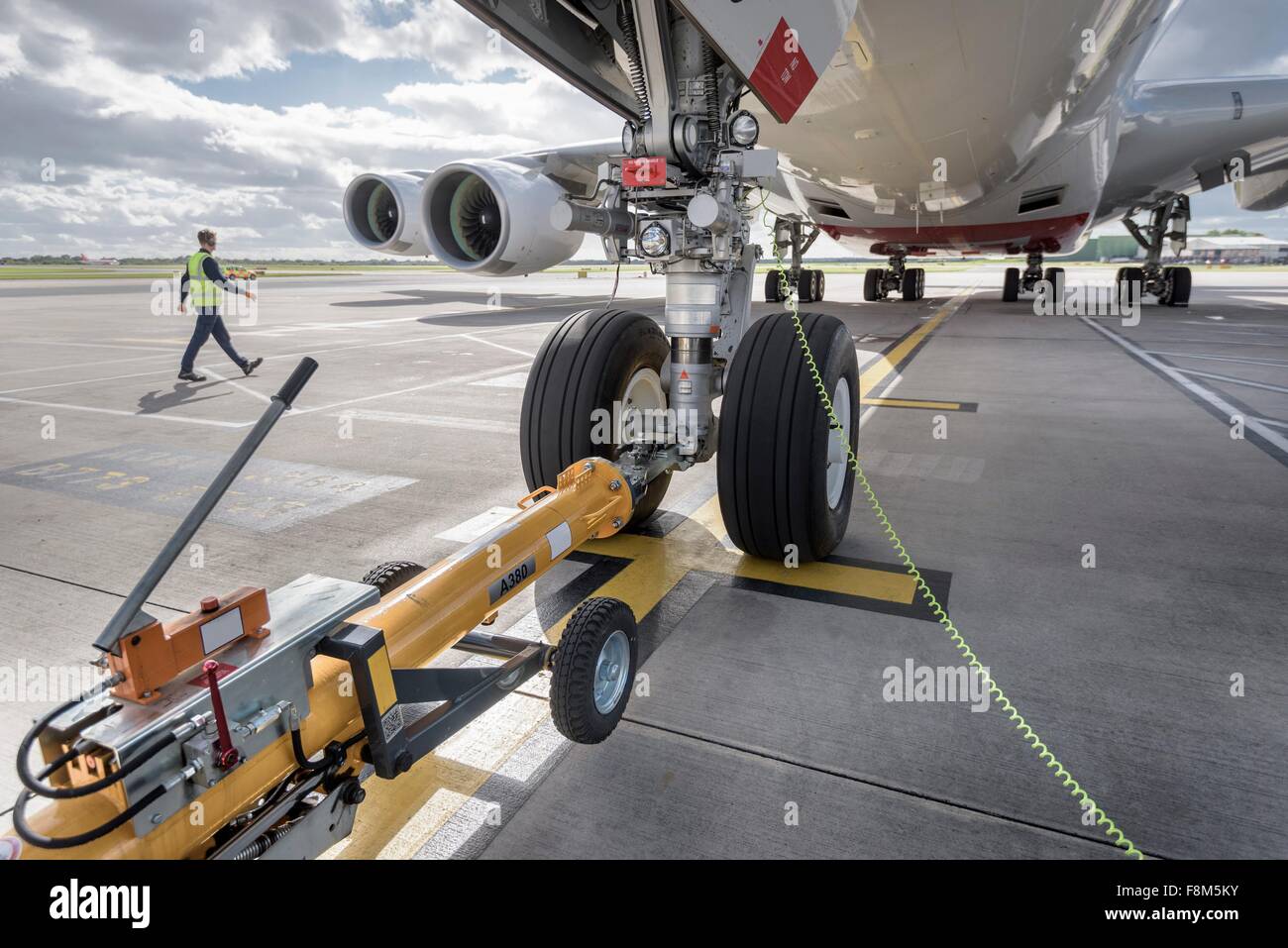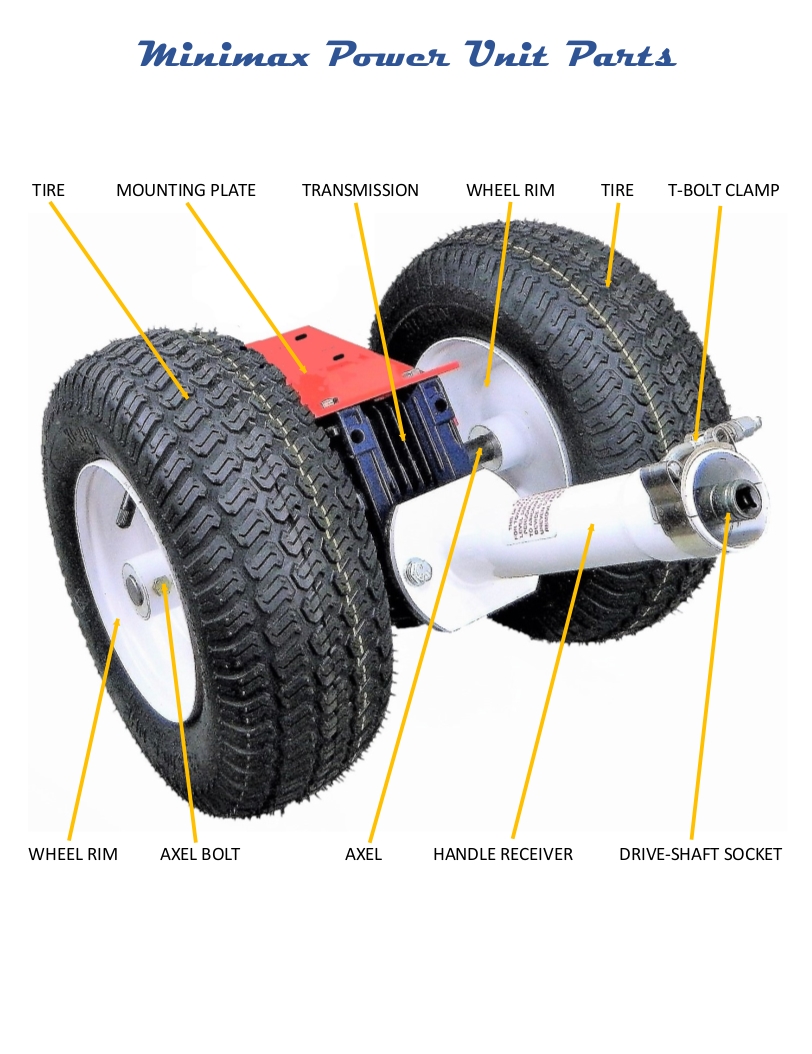Aircraft Towing Systems - The forward movement of an aircraft, usually with its engine off, using the power of a special ground vehicle attached to or carrying the nose gear. It can apply to the movement of aircraft both during and outside of operations. This will affect the disclosure of procedures and qualifications required for persons occupying flight crew seats on aircraft during manoeuvres. As part of an inoperative transfer of an aircraft overseen by maintenance personnel, it may follow a pushback through the nose-in gate of an empty aircraft with the engine off.
Once the responsible person on the flight deck of the aircraft has confirmed the “brake release” to the responsible person of the ground crew vehicle, the ground crew becomes responsible for its safe maneuvering. Aircraft in accordance with any ATC clearance that may be required and as expressly agreed in advance.
Aircraft Towing Systems

Unless the maneuver is outside an ATC controlled range of motion, RTF clearance is required to perform it. When the aircraft is maneuvered to a take-off position or a push-and-hold position, this is usually obtained by the aircraft commander or another person on the flight deck. When the out-of-service aircraft is relocated, permission is normally obtained from the towing vehicle operator. The defined RTF phraseology for obtaining clearance for TOV is contained in ICAO PANS-ATM (Doc 4444) and ICAO Manual of Radiotelephony (Doc 9432).
Emissionsfreie Flugzeugschlepps: Lufthansa Leos Ist Erstkunde Des Vollelektrischen Stangenlosen Flugzeugschleppers Phoenix E
Previously almost all aircraft types required ground securing pins to be installed at least in the nose gear during a towing operation, but this is no longer always the case. If a ground securing pin is installed for towing, it may need to be removed after the maneuver is complete. When a ground securing pin is fitted to an aircraft for towing (or other purposes) or later removed, it is common practice to require the recording of that action in the aircraft's technical log.
The "traditional" way a ground vehicle can move an aircraft is by attaching it to the aircraft's nose gear via a tow bar. These must be approved for use on a specific type of aircraft and clearly marked as there is no universal tow bar specification. An alternative method, which is becoming more common for towing, is to use a specialized vehicle called a "towerless tug". These aircraft have two low "arms" on either side of the nose gear and are used to engage the aircraft's landing gear leg, raising it slightly off the ground.
The responsibilities of the ground crew team include ensuring that no part of the aircraft structure impacts a stationary object, vehicle or other aircraft. Ground crew must communicate with flight deck personnel using the intercom and both parties must be able to hear the conversation with ATC. In the absence of a pilot qualified for the aircraft type on the flight deck, the person in charge of the towing ground vehicle is usually responsible for obtaining the required ATC flight movement clearance.
The task of all flight deck occupants is likely to be the proper operation of the aircraft's braking system and the provision of sufficient electrical power to the aircraft to operate the radio and proper exterior and interior lighting. An APU is likely to be running where available to provide electrical power and hydraulic accumulator pressure for braking will be achieved through the use of an electric pump.
Ats World Wide Breaks Ground For Prototype Aircraft Towing System
A major threat to aircraft flight safety resulting from towing operations is collisions between aircraft and other aircraft. There are two “types” of potentially high-risk collisions:
Ground crew should be particularly aware of these two hazards and should be thoroughly trained in both ATC practice and towing of the type of aircraft involved. The latter should include awareness of aircraft dimensions and turning arcs.
Insufficient RTF knowledge of people responsible for communicating with ATC from tow team.

Conducting such operations during darkness or poor ground visibility increases the risk of towing collisions and procedures should effectively address and/or deter such operations.
Sustainable Aircraft Towing: Where Do We Stand?
On 27 September 2017, an Airbus A320 was being towed by a tow tractor outside the departure gate in Dublin when a tow bar shear pin broke and the tow tractor driver lost control. The tug then collided with the right engine and suffered significant damage. The tractor driver and the support staff on the ground were not injured. The investigation concluded that although the failure of the shear pin could not be attributed to any specific cause, the relative severity of the result was likely increased by the wet surface, forward lean on the ramp, and engine start-up.
On December 26, 2016, the wing of an Airbus A340-300 was recovered by towing in Copenhagen after colliding with an Avro RJ100 that had been lowered from its stand while taxiing due to the absence of expected ground crew. RJ100 had been there for 12 minutes at the time of the collision. The investigation attributed the collision to the differing expectations of the tow driver, apron controller and RJ100 flight crew regarding the tow driver's overall satisfaction when it was a routine, non-stressful task. .
On January 13, 2016, ice was observed on the upper and lower wing surfaces of a Boeing 777-300ER, scheduled to leave Lisbon late morning with CAVOK status and 10°C. Because Lisbon had no de-icing facilities, it was towed to a location where the sun would melt the ice faster, but during a poorly planned maneuver one of the wingtips was damaged when it made contact with an obstacle. The investigation blamed ice, which led to a problematic resumption of the operator's policy of refueling most of the return fuel on overnight approach flights, where it was soaked from the cold.
On June 4, 2002, the crew of MD82 engaged in AP and A/T in cruise at FL330 failed to notice a progressive loss of airspeed and a concomitant increase in pitch attitude as both engines returned to thrust levels that would not sustain level flight could. The aircraft stalled and a recovery was completed at significant altitude before engine thrust was restored and a diversion performed. Investigations attributed the engine rollback to ice crystal icing jamming the engine's intake pressure sensor and a failure to apply crew-mandated engine anti-icing. Two safety recommendations were made.
Army Teams With Coast Guard On Aircraft Towing System
On August 21, 2006, a Boeing 737-500 nose gear broke off while being towed at Newark Liberty International Airport. A technical crew repositioned the aircraft in visible weather conditions during the incident. No one was injured and the aircraft sustained minor damage.
On 23 March 2004, a British Airways Boeing 747-400 passed in tow a stationary Irish airline Aer Lingus Airbus A321-200 on a departing scheduled service in good daylight visibility and on the 747's wingtip. The rudder of the A321 was hit and severely damaged. The towed aircraft was cleared for towing and positioned according to the A321 clearance. The tow team was unaware of the collision and initially there was little doubt as to the cause of the sudden shaking of the A321 flight deck when the impact took place, but the A321 cabin crew felt the impact tremor and upon noticing the nose concluded that that the 747 had struck their aircraft. The first officer then saw the 747's damaged wingtip and informed ATC of the possible impact. Another aircraft located behind the A321 later confirmed the rudder damage. At the time of the collision, the two aircraft involved were on different ATC frequencies.
On January 10, 2008, an Airbus A380 was damaged while being backed up at Singapore Changi International Airport when the aircraft's right wing landing gear became stuck in soft ground next to the taxiway.

On February 16, 2005, at Luton Airport, a Boeing B767-300 collided with a tow tractor towing the aircraft when a shear bolt broke on an inoperative tow bar used to tow the aircraft. The plane ran into the tow tractor when the ground crew abruptly stopped the tow tractor. The fuselage and landing gear of the aircraft were damaged as a result of the collision with the tug.
Aircraft Towing Equipment Market: Global Industry Trends, Share, Size, Growth, Opportunity And Forecast 2022
On 26 June 2007 at Birmingham Airport UK, a BAe Jetstream 41 initiated an engine pushback without the use of an intercom between ground staff and flight crew. The pushback could not be completed due to an inability to disconnect the tow bar and confusion over the decision to return the aircraft to the gate resulted in the aircraft brakes being activated, resulting in the aircraft's nose gear breaking.
On November 13, 2008 a Boeing
Tow tug, aircraft tug manufacturers, tug aircraft tow tractor, aircraft tow tug for sale, electric tow tug, aircraft tug, tow buddy aircraft tug, aircraft tow truck, power tow aircraft tug, ez tow aircraft tug, tug tow tractor, power tow tug

0 Comments